The Future of Heartland Living
ETHOS Issue 19, Jul 2018
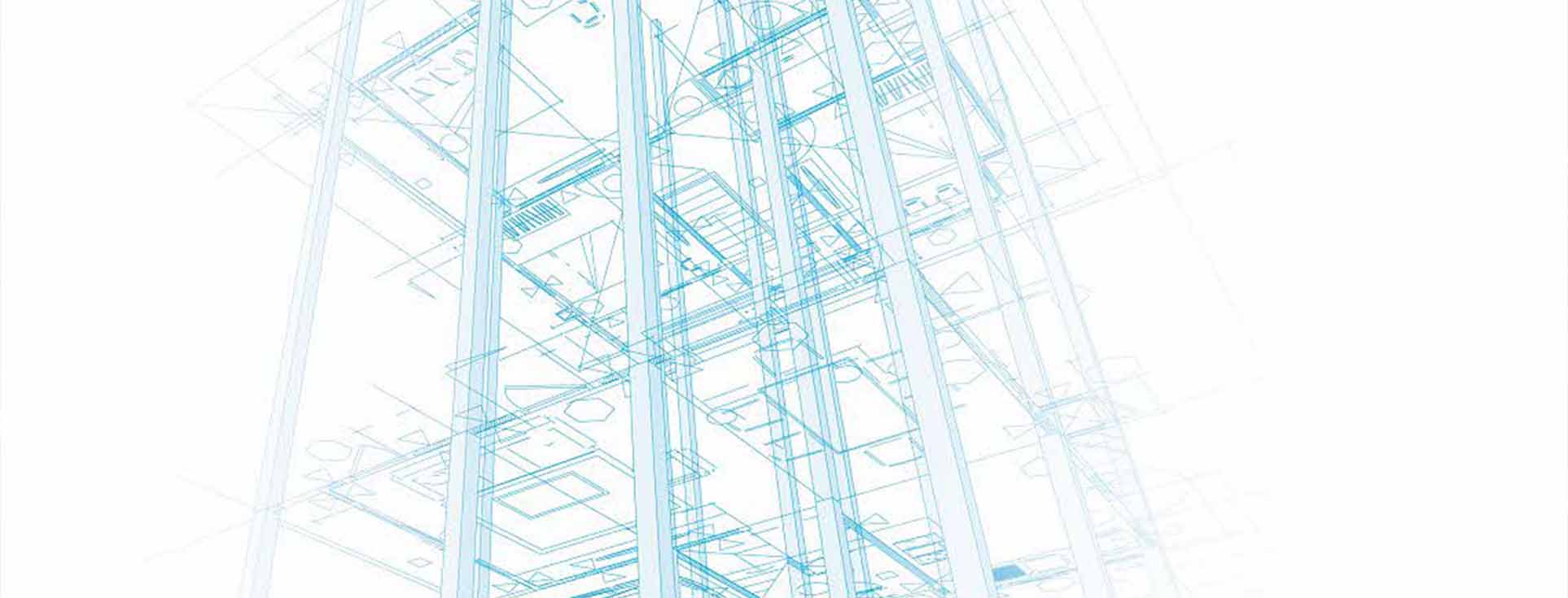
Since its establishment in 1960, Singapore’s Housing and Development Board (HDB) has come a long way in its ongoing mission to provide affordable and accessible housing to Singaporeans. Today, about 82% of the resident population of 4 million live in more than 1 million HDB flats across the island. Of these households, about 9 in 10 own the flats they live in, thanks to a range of government subsidies—grants and schemes aimed at helping Singaporeans own homes, giving them a stake in the country and fostering a sense of belonging and rootedness.
However, our continuing goal to meet our residents’ housing needs and ensure that HDB towns remain liveable in the future is not without its challenges. Singapore’s resident profile is changing as a result of demographic shifts — a rapidly ageing population, evolving family structures and the rising number of Singaporeans remaining single. Appropriate policies and programmes will have to be developed to meet the needs of the different resident segments: for instance, strategies to promote ageing in place for the elderly.
There is now also a much more diverse population in HDB towns as we begin to see more inter-ethnic and transnational marriages as well as more new citizens. The complexion of our estates will evolve organically with these changes in social composition. The definition of “neighbours” must also include people connected through social media and not only by proximity. HDB plays a critical role in fostering social cohesion. We need to find ways to increase community connections and build a stronger community spirit so as to strengthen the sense of belonging and ownership of the living environment amongst our residents.
As a small city-state, Singapore is inevitably a high density environment. More than ever, planners and architects must find innovative planning and design solutions to ensure a pleasant living environment. Aspirations are rising and lifestyles changing. Many of our towns will mature and age over time. The cycle of improvements and rejuvenation that we have carried out since the 1990s will need to continue, subject to evolving needs and available resources.
Climate change is another consideration that HDB, as the largest housing developer in Singapore, will need to take into account—we must build in an environmentally responsible manner, ensuring that our towns are sustainable in an uncertain future.
Technology is set to disrupt the way in which we live, work and play: it should also prompt HDB to rethink the way we plan our housing estates and design for urban mobility. As the future of work and retail changes, we will need creative ideas to support residents and sustain the vibrancy of businesses and other activities in the town and neighbourhood centres. We can also harness technology to help us plan and maintain our estates better, achieve a car-lite environment, or introduce smart applications that can benefit our residents.
To address these emerging challenges, HDB h as honed our housing policies and programmes to ensure that they remain relevant for future needs. We have also developed a roadmap for delivering a better living environment for our residents.
We must build in an environmentally responsible manner, ensuring that our towns are sustainable in an uncertain future.
In recent years, HDB has enhanced or introduced new housing policies and programmes to cater to the diverse needs of different households, as demographics and lifestyles change.
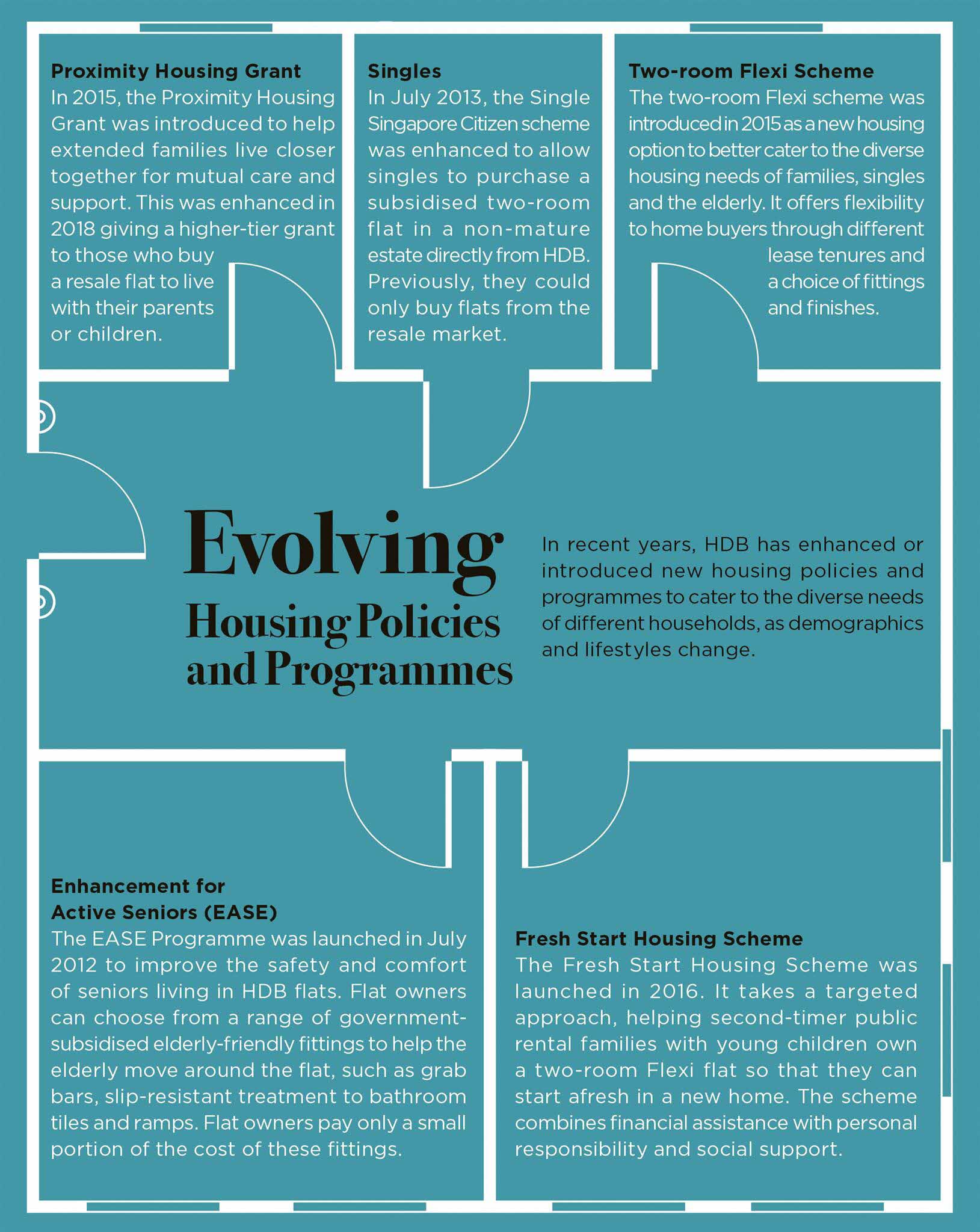
A ROADMAP TO BETTER LIVING
In 2011, HDB announced its “Roadmap to Better Living in HDB Towns”, which would guide its development programmes over the next few decades. The roadmap aims to create:
- Well-designed Towns
- Sustainable and Smart Towns
- Community-centric Towns
Well-Designed Towns
As a master planner and developer, HDB takes a comprehensive approach in developing entire towns, not just housing alone. Over the years, town planning has evolved in tandem with changing socio-economic and demographic conditions, guided by a few principles:
- Planning for Self-Sufficiency
- The Neighbourhood Concept
- The Checkerboard Concept
- Hierarchy of Facilities
- At Town level—a town plaza, town park, sports complex, integrated transport hub and shopping centres.
- At Neighbourhood level — neighbourhood centres, schools and parks.
- At Precinct level—a precinct pavilion, 3-generational play and fitness facilities and community gardens.
- Planning for Connectivity
HDB towns are developed as total living environments to meet people’s daily needs. Each town is reasonably self-sufficient. In addition to housing, residents are well served by shops, schools and social and recreational facilities.
At the heart of each town is the town centre: the key commercial and activity hub. Around it are smaller neighbourhoods of 4,000 to 6,000 units, each with its own shops, schools and parks. Each neighbourhood further comprises precincts of about 400 to 800 units, served by a local shop cluster, precinct facilities (such as a playground) and a precinct green. Smaller and more intimate, walkable residential clusters of 1,200 to 2,800 dwelling units can be found in the newer towns, such as Punggol.
Low-rise, low-intensity land uses such as parks and schools are juxtaposed with high-rise, high-density residential developments to achieve visual and spatial relief in our high-rise, high-density public housing environment.
Larger facilities and amenities serve a wider catchment of residents, while smaller-scale amenities cater to localised day-to-day needs. The facilities at different levels include:
HDB towns are well served by a mass transit network, highways and roads. This is now supplemented by more comprehensive cycling and pedestrian networks.
HDB takes a comprehensive approach in developing entire towns, not just housing alone.
With the ramping up of the building programme in the early 2010s, HDB has taken the opportunity to plan and develop a new generation of public housing. Building on the principles above, we have formulated master plans for new areas of development like Bidadari, Tampines North and Punggol North, incorporating a number of fresh ideas:
- Focus on Quality Urban Design to Sculpt Distinctive Towns
- Develop Distinctive Districts and Neighbourhoods
- Seamless Connectivity
- Living in Green to Mitigate High Densities
- New Layouts for New Lifestyles
A key tool to shaping HDB towns is the use of urban design. In contrast to architecture, which focuses on the design of individual buildings, urban design deals with shaping a larger group of buildings, streets and public spaces at neighbourhood and district scale, with the goal of making better places for people.
Heritage and place character will be capitalised on to create more distinctive identities and inform urban design for a new generation of towns, and in older estates being rejuvenated. The new building typologies provide a greater variety of designs to add more interest to the townscape, including courtyard and terrace designs, more intimate and lower slab blocks, juxtaposed with high-rises featuring sky gardens.
A car-lite environment will be encouraged through the use of public transport and pedestrian-friendly features such as connected paths and covered linkways. Where possible, new areas will be served by a good rail and bus network. Car-sharing schemes and the use of electric vehicles will be introduced where feasible. A comprehensive cycling network will be integrated with the towns.
Homes will be nestled within a garden as more tropical green and blue water elements are introduced in planning and design, relieving urban density. Blue elements, such as ponds and streams, are integrated with the landscaping. These elements will be multi-functional, collecting storm water while serving as aesthetic and recreational features.
Design details that can improve both functionality and aesthetics will continue to be incorporated in our flats. These include Universal Design features such as wider internal corridors and level floors which provide more convenience for the elderly and the disabled, and families with young children. Columns are positioned at the sides wherever possible, allowing residents more flexibility in reconfiguring the flat layout.
Working with industry partners and other government agencies, HDB is exploring technologies and urban solutions that could make HDB towns even more liveable, efficient, sustainable and safe.
Smart HDB Towns
Working with industry partners and other government agencies, HDB is exploring technologies and urban solutions that could make HDB towns even more liveable, efficient, sustainable and safe.
Smart HDB Town Framework
Guided by the mantra “Smarter Towns, Better Living”, the Smart HDB Town Framework comprises two key layers.
(1) Enabling Infrastructure that allows data connectivity and transmission. It includes a “sensing” layer (cameras, sensors, Internet of Things devices, etc.) which collects data to support analytics.
(2) Application and Services that help HDB serve residents better. These are grouped under five key dimensions:
- Smart Planning
Computer simulations and data analytics are used to improve the way HDB towns, precincts and buildings are planned and designed, and also to find optimal and cost-effective solutions. - Smart Environment
This involves real-time sensing of the environment by linking HDB estates to a network of sensors that capture real-time information (e.g., temperature and humidity) within the town environment. - Smart Estate
HDB leverages smart technologies to collect and analyse data so as to improve estate services, optimise maintenance cycles and pre-empt problems. - Smart Living
HDB will build “smart enabled” homes by putting in place relevant infrastructure and standards. Residents can then tap on commercially-developed applications, such as smart elderly monitoring and utilities management systems. - Smart Communities
Using information, communications and data technologies, HDB is able to better understand and engage residents, and empower communities to take more ownership in co-creating their living environments.
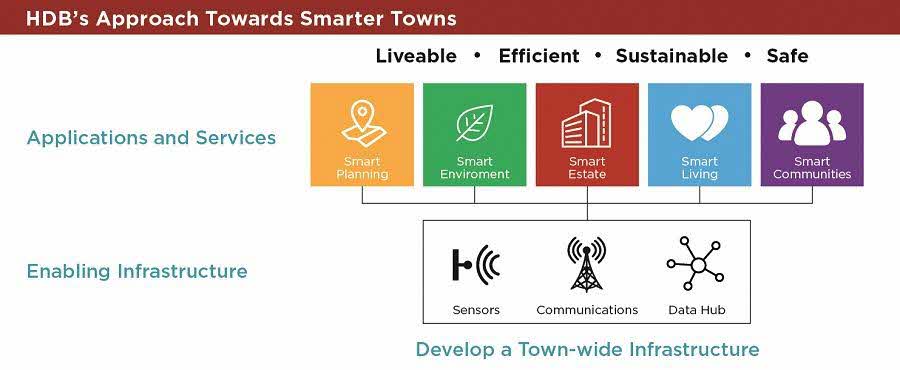
Source: HDB
Living Labs
New ideas and innovations are tested out in actual town settings. These living labs include Yuhua, where live-in residents provide feedback, response and usage data that help us calibrate solutions that meet their needs. Smart technologies, such as the smart car park management and smart irrigation, also enhance the urban planning and design for Punggol Northshore, one of seven waterfront housing districts planned in Punggol Eco-Town.
Smart solutions, like smart-enabled flats and smart lighting, are slated for widerscale implementation in other Punggol developments.
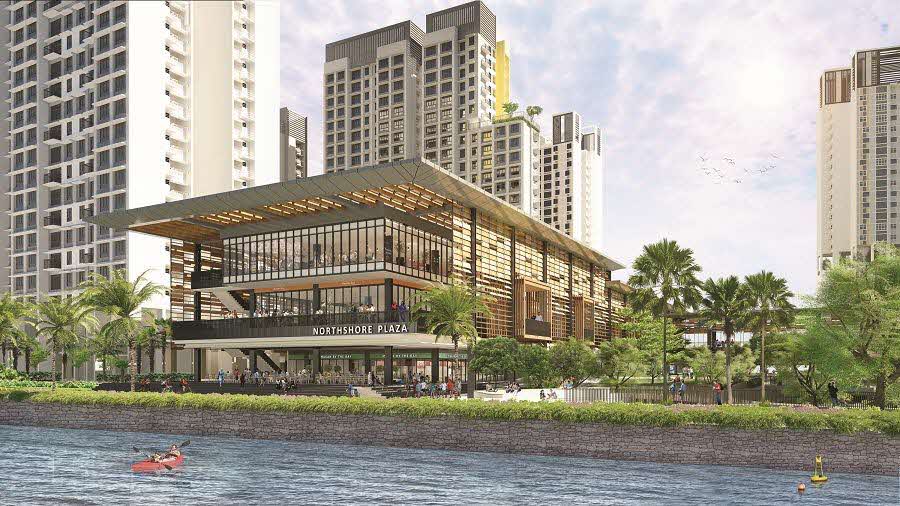
The Neighbourhood Centre in Northshore, a smart and sustainable district in Punggol, will feature smart technologies.
Source: HDB
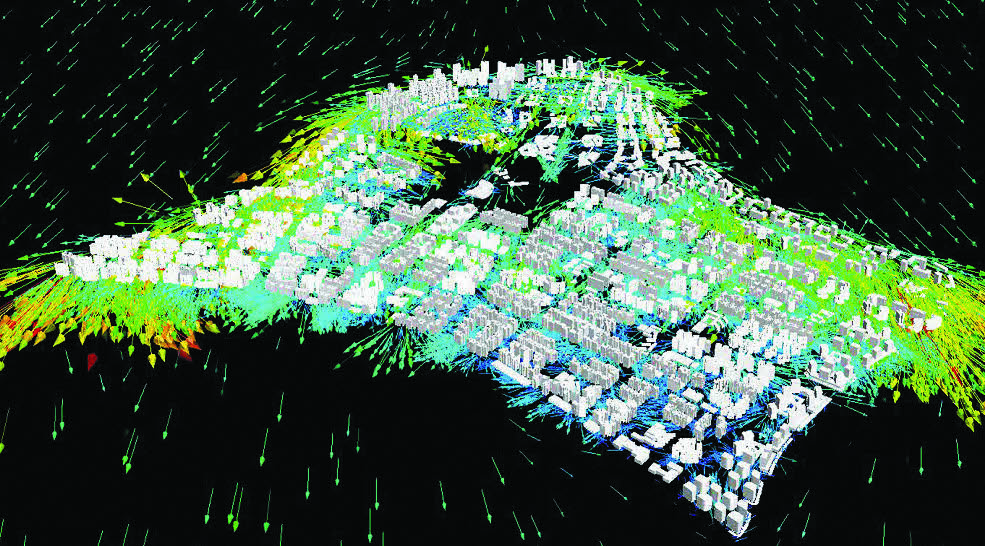
Environmental modelling is part of the Smart Planning process for Punggol, allowing HDB planners and architects to see the effect of urban design on environmental conditions.
Source: HDB
Perspectives of Remaking of Heartland 3
Source: HDB
Sustainable and Smart Towns
In line with Singapore’s commitment to reduce its carbon footprint, HDB carries out active research in a range of related domain areas, including social, economic and environmental sustainability. In 2011, we developed a comprehensive Sustainability Framework for Punggol Eco-Town. It features a variety of strategies from reducing carbon emissions to optimising the use of resources and achieving effective energy, water and waste management.
This is to provide a clean, safe, healthy and comfortable living environment for our residents.
HDB is also adopting innovations in information technology, the “Internet of Things” and big data to develop smarter HDB towns that are more sustainable, efficient, safe and liveable.
Such initiatives help to ensure the social and economic sustainability of our HDB towns.
Since the 1990s, HDB has implemented various initiatives to upgrade housing precincts in the older towns and estates, bringing them to a standard closer to the newer ones. Such initiatives include the Main Upgrading Programme, Lift Upgrading Programme, Home Improvement Programme, Neighbourhood Renewal Programme and Selective En bloc Redevelopment Scheme. Beyond the upgrading and redevelopment of individual housing precincts, the Remaking Our Heartland (ROH) programme was launched in 2007 as a comprehensive blueprint to renew and further develop HDB towns and estates. For Woodlands, Pasir Ris and Toa Payoh—the three towns announced in 2015 for ROH 3—a customised set of strategies was developed, taking into consideration factors such as local demographics, history, and the needs and challenges of each town. Residents and community stakeholders are actively engaged to seek their views and suggestions in drawing up these rejuvenation plans and proposals.
HDB also works with shop owners/tenants on the rejuvenation of retail shops through the Revitalisation of Shops Scheme. Under the scheme, co-funding and incentives are provided and promotional activities organised. In addition, with the increasing prevalence of online shopping, HDB has to consider ways to enhance the design of neighbourhoods to make them more delivery-friendly, like providing drop-off and parcel collection points at blocks and precincts.
Bidadari Estate, in the central region of Singapore, features a unique site topography, history and identity.
Bidadari
Bidadari Estate, in the central region of Singapore, features a unique site topography, history and identity. The estate is being developed into four distinctive districts complemented by a market square, with a range of facilities to serve residents’ needs. Each district will incorporate new housing forms that respond to Bidadari’s unique terrain and site characteristics:
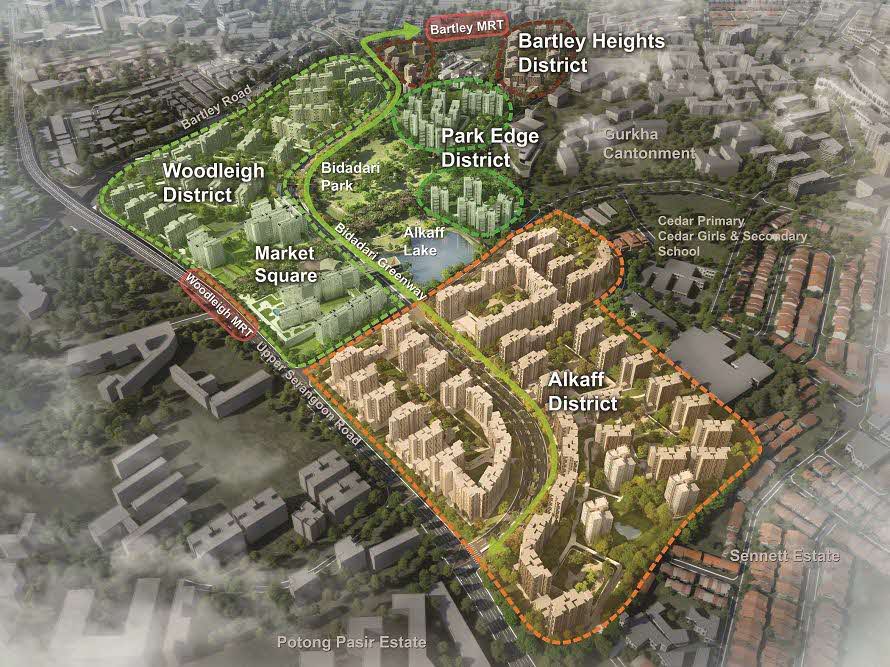
Four distinctive districts in Bidadari
Source: HDB
For example, the Woodleigh district features a community of urban villages among lush rolling hills. In the Woodleigh Glen precinct, a Village Street located along an existing valley serves as a conduit connecting residents and linking to community spaces that flank the valley. Sky terraces open up views to the Bidadari Hill Park. To improve the design of the development, environmental modelling tools are used to simulate microclimatic conditions such as wind flow, temperature fluctuations, and solar irradiance.
To recreate a sense of tranquility and recall memories of the former Alkaff Lake Garden in the area, a new Alkaff Lake will be created within the new Bidadari Park. The lake will also serve as a water retention pond.
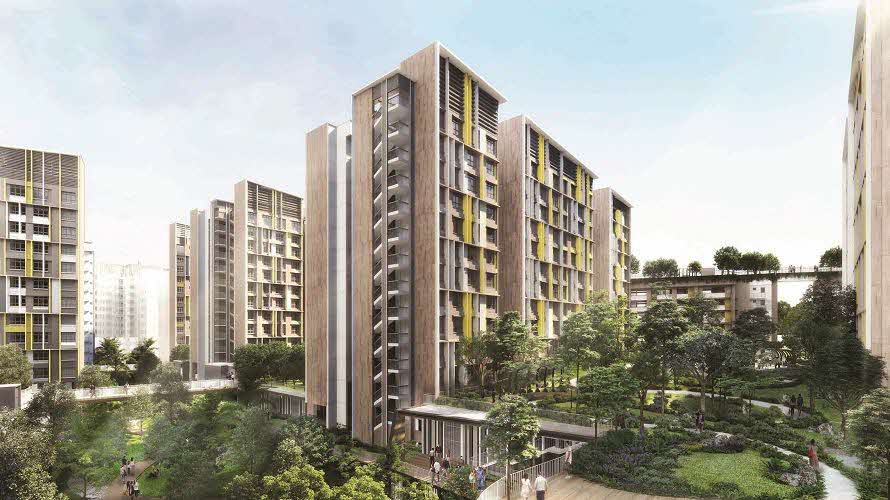
Artist’s impression of Woodleigh Glen
Source: HDB
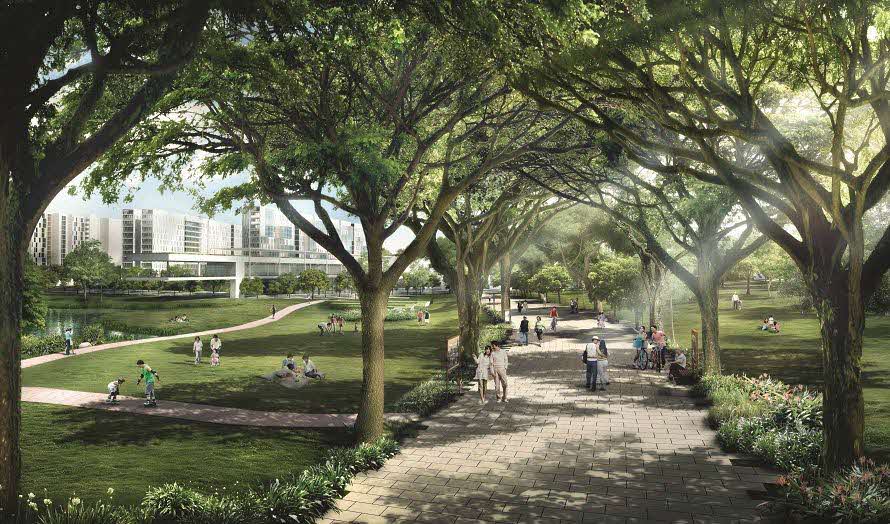
Artist’s impression of Heritage Walk
Source: HDB
A unique new feature of the estate is the Heritage Walk: the Old Upper Aljunied Road will be pedestrianised to preserve the canopy of mature trees. An existing Memorial Garden, which commemorates the heritage of the former Bidadari Cemetery and Singapore’s prominent pioneers, will be integrated into Bidadari Park to bring the district’s heritage closer to residents and visitors.
Community-Centric Towns
With over 80% of Singapore’s resident population living in HDB flats, public housing plays a crucial role in promoting social harmony in multi-racial, multicultural and multi-religious Singapore. To this end, we provide a living environment where Singaporeans of different races and socio-economic groups have opportunities to come together, mingle and bond as a community.
HDB provides a living environment where Singaporeans of different races and socio-economic groups have opportunities to come together, mingle and bond as a community.
Community building is achieved through the provision of areas for the community to meet and mingle, like common greens, playgrounds and precinct pavilions. Residents can live, work and play while building ties. More community spaces to facilitate interaction and activities will be included in the planning of towns to support the flourishing of communities. “Community living rooms” located at void decks or landscape decks provide opportunities for residents to interact with each other. On a larger scale, partially covered plazas are provided at the town centre for group gatherings. HDB works with grassroots organisations to activate and improve the vibrancy of such spaces through systematic “place-making” programmes.
Beyond physical provisions, it is essential to nurture community spirit and foster social cohesion. Housing policies such as the Ethnic Integration Policy and Singapore Permanent Resident quotas help promote racial integration and a balanced mix among the various communities living in HDB towns. HDB also helps build “heartware” by organising community building programmes that would promote neighbourliness, expand residents’ social network and provide opportunities for community participation. These programmes are guided by four goals: Vibrant Neighbourhoods; Responsible Communities; Understanding, Trusting and Caring Neighbours; and Inclusive Communities. Some of these programmes include: the annual HDB Community Week, Good Neighbour Award, MyNiceHome roadshows and Welcome Parties for residents who have moved into new housing developments.
Kampung Admiralty
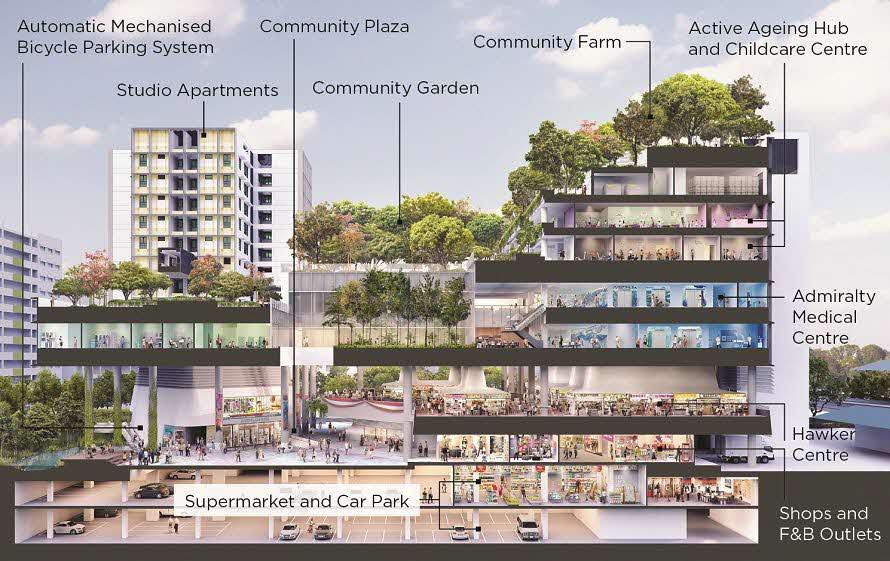
Kampung Admiralty
Source: HDB
Kampung Admiralty, an integrated development that caters to a range of diverse needs, is designed with seamless access to elderly housing and a wide range of facilities like childcare centres, a medical centre, active ageing hub, hawker centre and shops. There are also community spaces like the community plaza and community garden where residents of all ages can pursue their interests or participate in communal activities.
CONCLUSION: NOT JUST HOUSING BUT HOMES & COMMUNITIES
Since 1960, the public housing programme has not only provided homes for the people of Singapore but has also shaped the urban landscape. It has also served as a vehicle through which the fruits of Singapore’s economic growth can be shared. Through the creation of a shared living experience, HDB has helped to build cohesive communities and fostered a sense of belonging and rootedness to Singapore. With greater innovation and more extensive stakeholder engagement, HDB looks to explore new frontiers in public housing, and co-create even better homes for generations to come.

